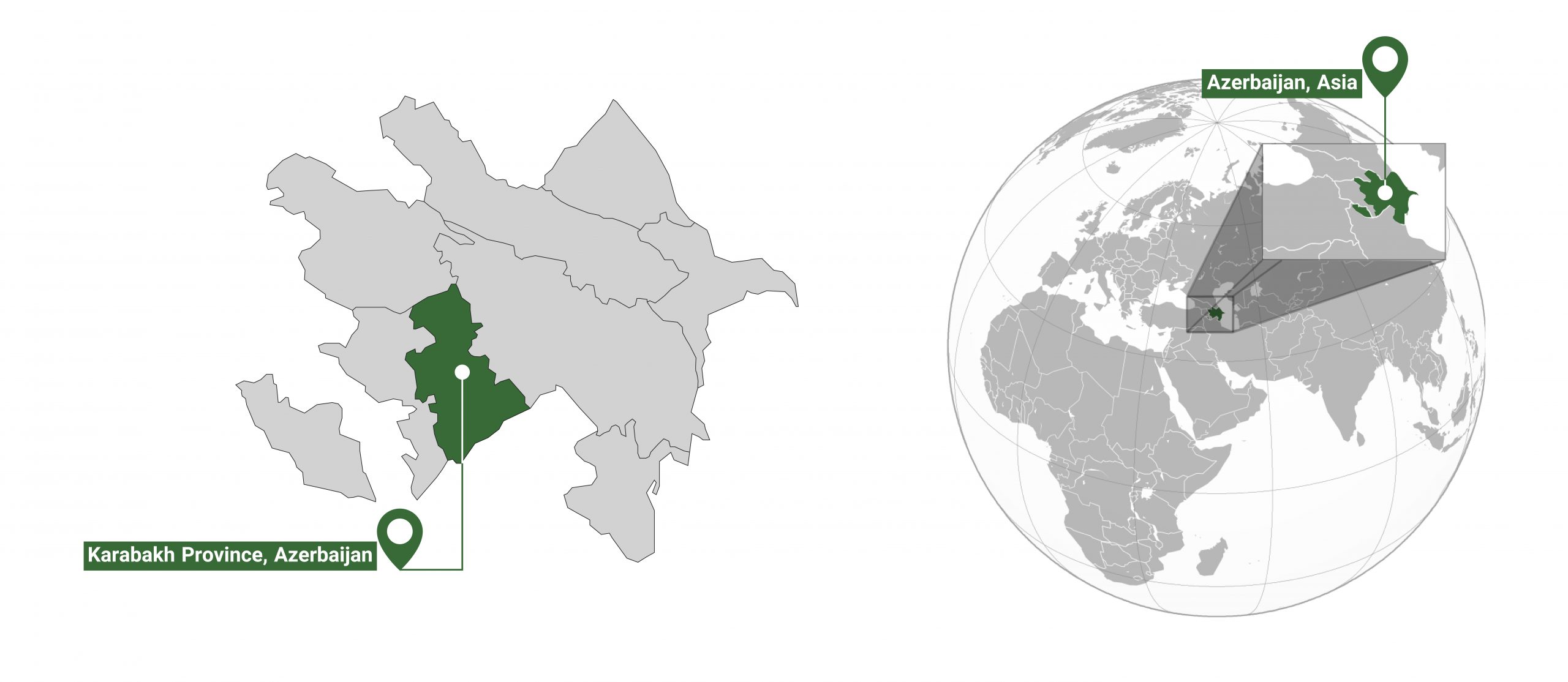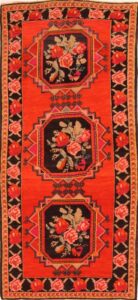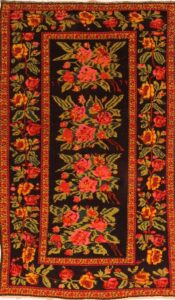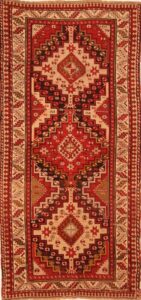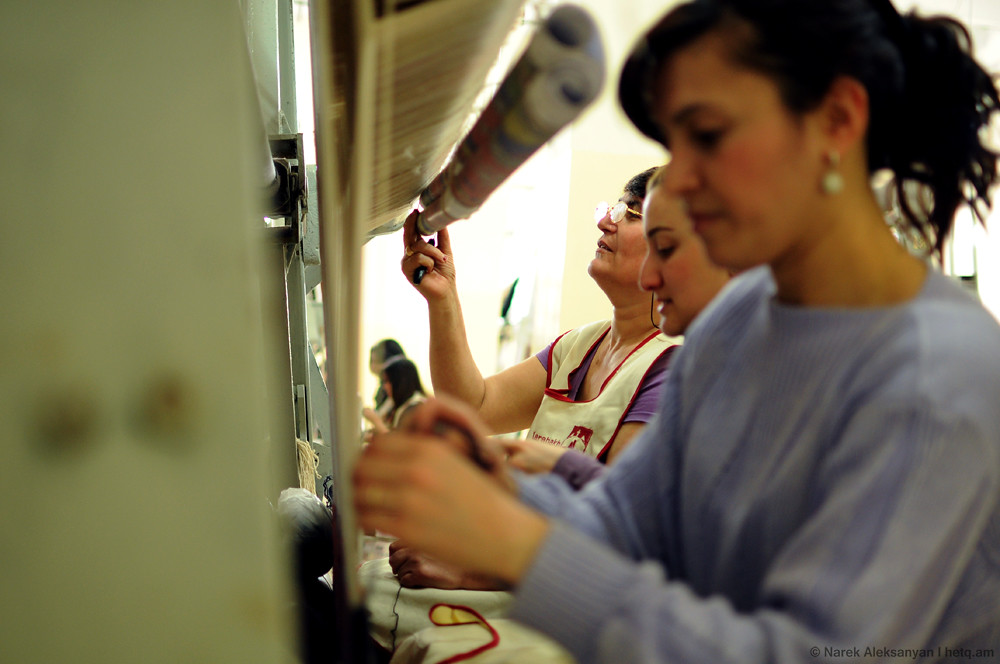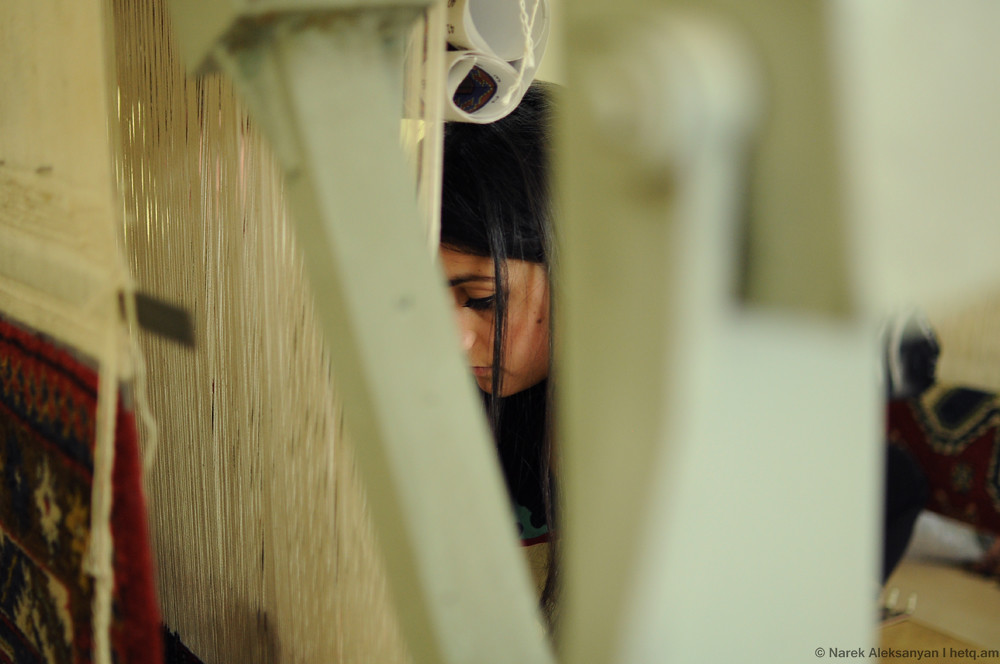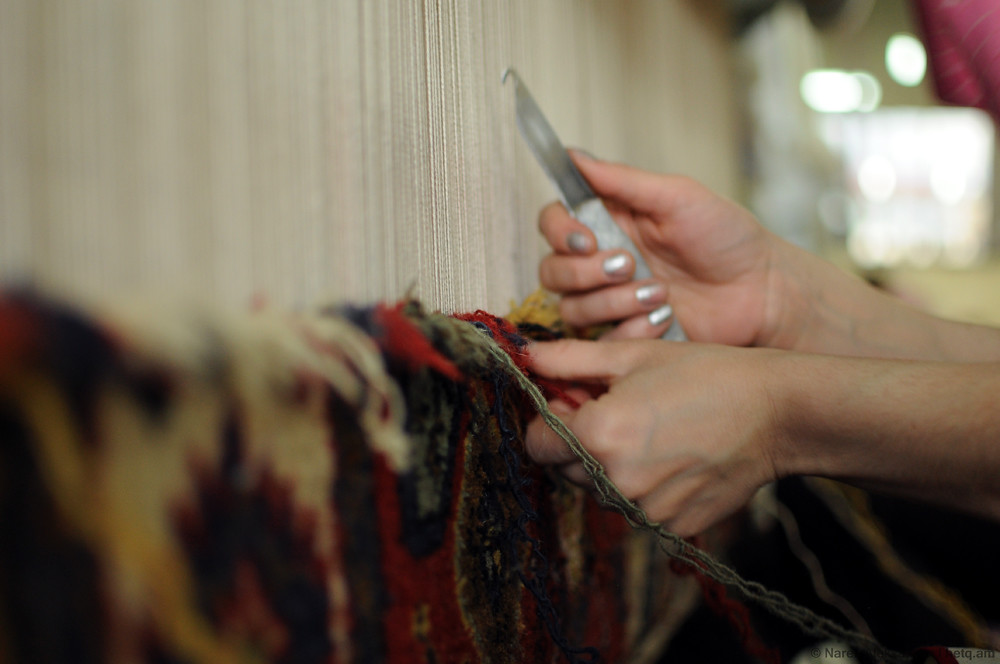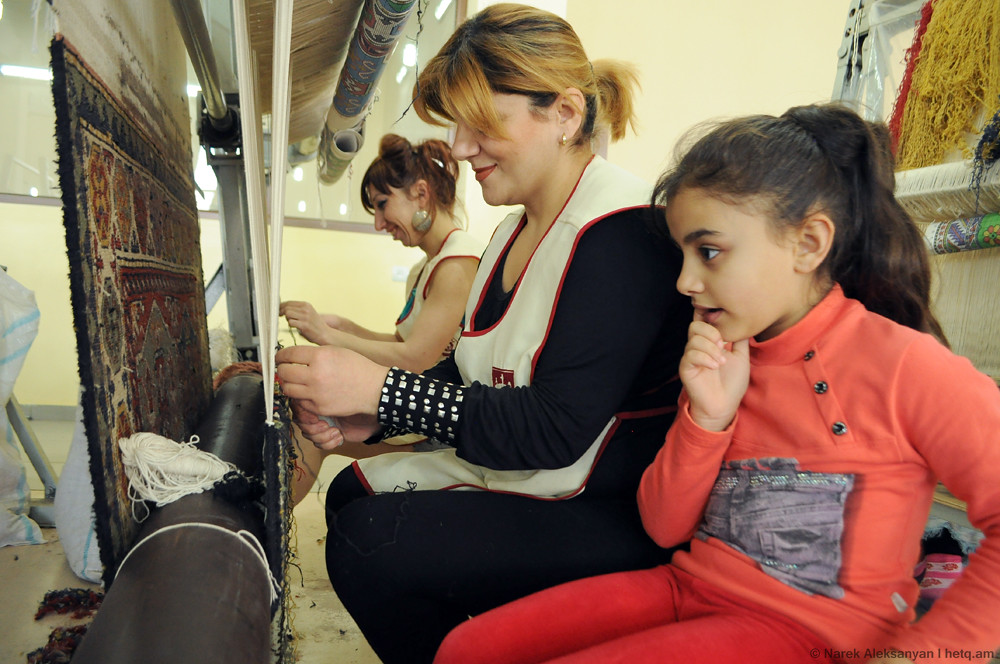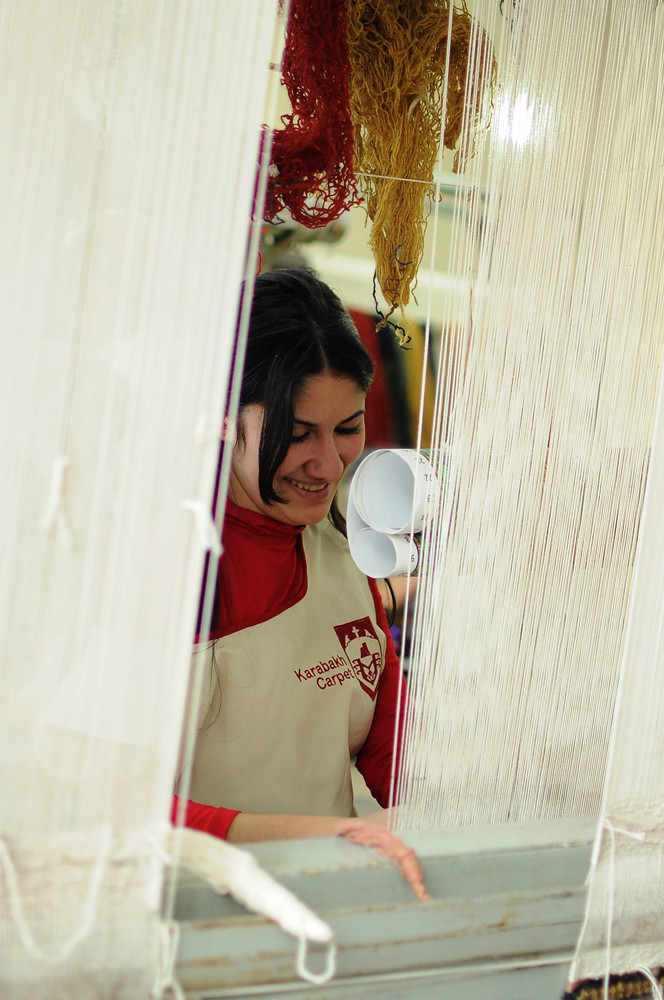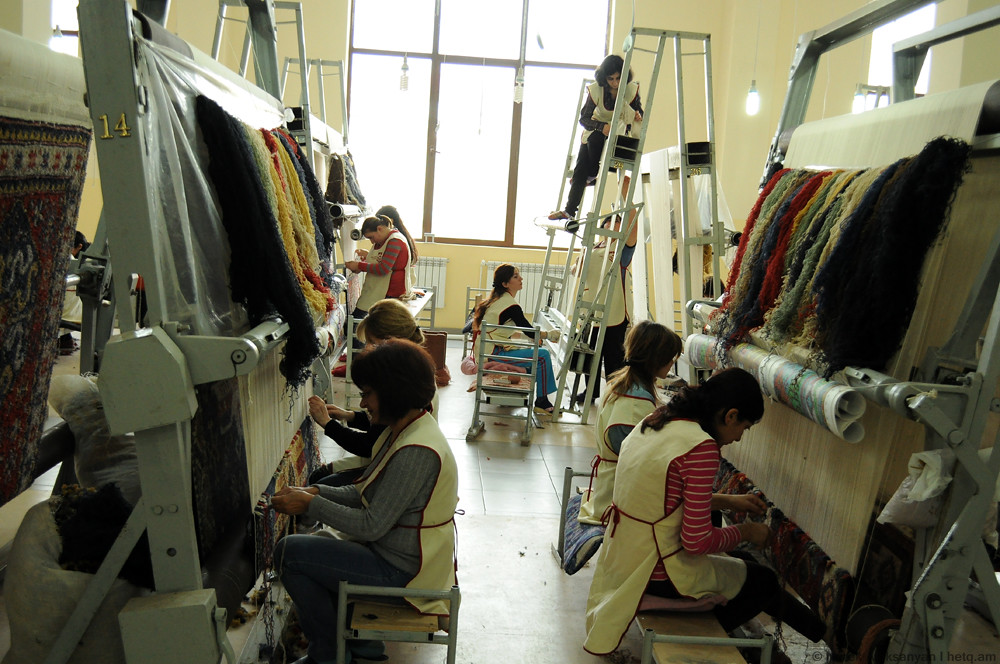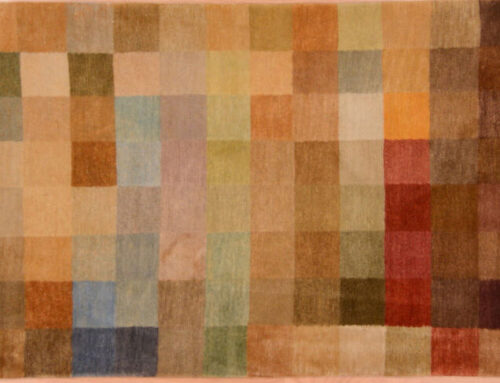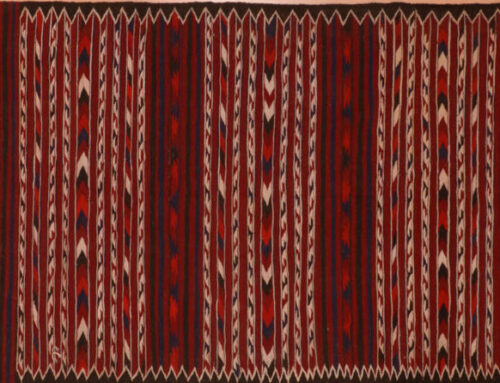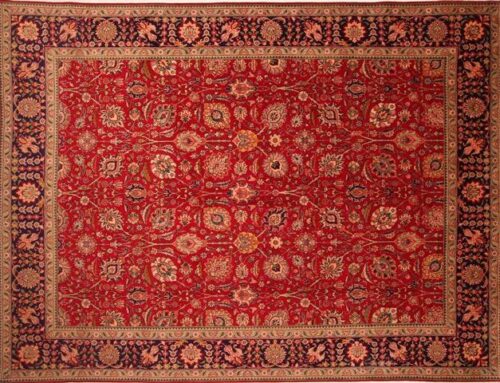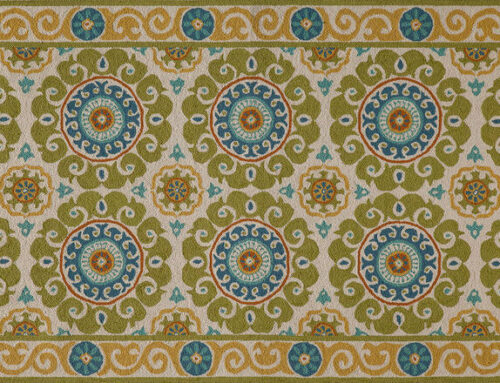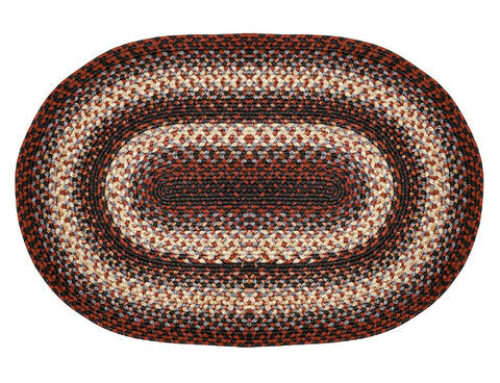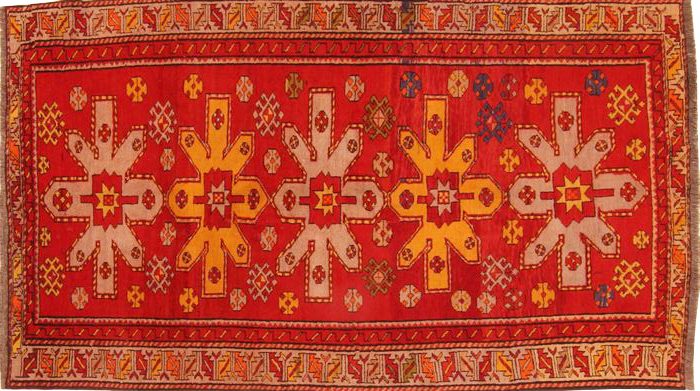
Origin of Karabakh Rugs 1
The Karabah district is located in the South Caucasus region. The population is mostly Armenian, and they can trace their weaving traditions back for centuries. Isolated Kurd tribes live in Karabakh and also contribute to weaving in the region. During the height of rug production in the Caucasus region an estimated thirty-three weaving villages were active in the Karabakh area.
History of Karabakh Rugs
Karabakh rugs and embroideries from as early as the seventeenth century are known in the market. The formats range from small bags to large gallery sizes. Gallery formats are made up to approximately thirty feet long, and runners up to approximately twenty-two feet in length can be found in the market. Karabakh village rugs range from good to very good in grade quality, and the city of Shusha produced weavings in good to fine levels.
Flatweaves called Sileh, Soumak, or verenh as well as needleworks are made throughout the Karabakh district.
Characteristics of Karabakh Rugs
-
Material and Knots
The rugs are made with a warp of either wool or a mixture of wool and goat hair. The weft is made of wool, cotton, or a mixture of wool and goat hair. Sheep wool is used for the pile and is considered high grade, shiny, and silky to the touch. The Turkish (symmetric) knot is employed.
-
Color
Karabakh rugs mainly have dark blue, blue-black, and pomegranate-red (from cochineal) for the field colors. These colors are interchangeable for the border and background. In addition, various shades of blue, brick-red, gold, ivory, green, cinnamon, coral, and brown are utilized for the pattern elements, borders, and design outlines.
-
Design and Pattern
Karabakh designs have either medallion or allover patterns. The designs are inspired by weavings from Persia and from the surrounding Caucasus region areas. Traditional Persian floral designs were greatly used in the city of Shusha. In the early nineteenth century, Shusha workshops started to make allover patterns of rose bouquets or oval-shaped medallions with French Flower Bouquets. This fashionable design complemented the French furnishings favored by the Russian royalty and nobility in this period.
Geometric nomadic designs were woven mainly in the scattered villages of Chan Karabakh, Che-Labred, Chondzoresk, and Goradis. The village of Chelaberd produced rugs called “Eagle” Kazak, also known as “Adler” Kazak, which today is one of the most well-known and important Caucasian rugs in the antique market. The village of Chondzoresk made the famous “Cloudband” Kazak, which is also valuable in the trade.
Kurdi carpets have played an important part in the weaving tradition of the region as well. The famous Kasim-Ushag design was made by Kurd weavers in Karabakh. Armenian inscriptions and Christian dates can be found in some Karabakh rugs dating from as early as the eighteenth century. Mohammedan (Islamic) dates also appear on rugs from this period.

